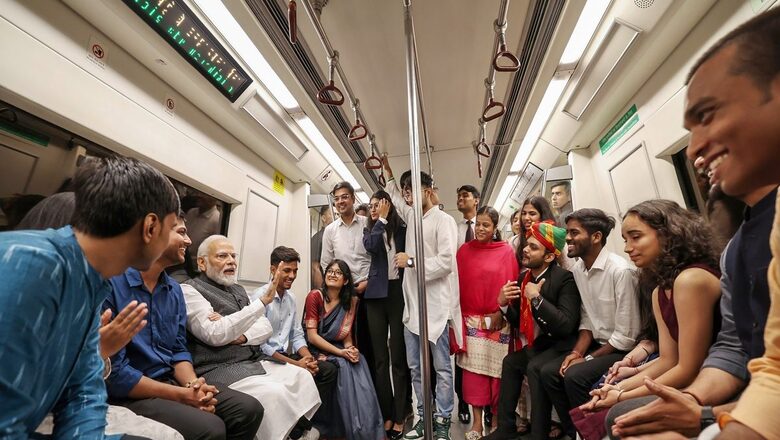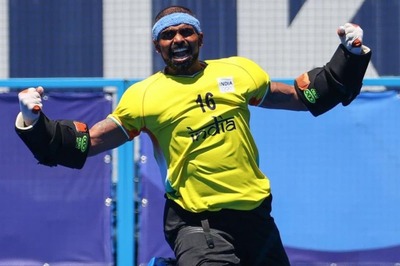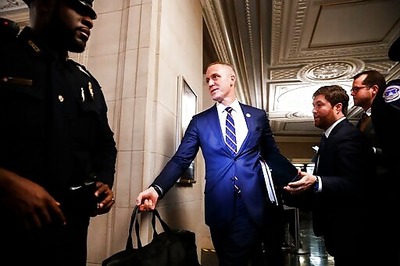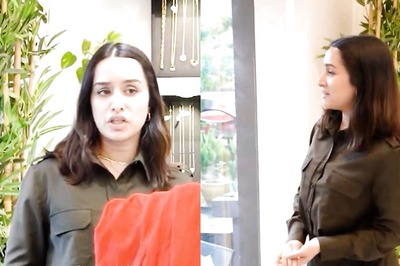
views
On his visit to the valedictory ceremony of the centenary celebrations of the University of Delhi on June 30, 2023, Prime Minister Narendra Modi virtually laid the foundation stone of Delhi University’s three buildings — Faculty of Technology, a computer centre and an academic block. PM Modi also released two coffee table books. He was felicitated by DU Vice Chancellor Yogesh Singh. On his way to the varsity, the PM took the metro at Lok Kalyan Marg metro station and deboarded at the Vishwavidyalaya metro station on the yellow line, during which he interacted with the students. It is a remarkable outreach step which is grounded in building a connection with the youth and unfolding the concerned generation’s culture and psychology. In a hyper-mediatised society like that of today’s, the PM’s active dialogical involvement with the students on the metro shows a leadership style which is marked by compatibility with motivation and stake-holding. PM Modi’s interactive political leadership style is a viable textbook example of youth capitalisation when India is undergoing its demographic dividend. The youth bulge bringing opportunities has threats of an ever-burgeoning uneducated and largely untrained population.
This article will discuss his vision to convert threats into opportunities and to have trained, skilled youth as the greatest stakeholder in the process of nation-building. The competence, integrity and performance of the leader is essential to evoke a constructive imagination in the minds of the youth. It’s a conceptual attempt that is integrated with his political leadership style that can bring about the actualisation of the capacities for performance bearing of the youth, which will have a positive and direct impact on society. The Union Minister for Education, Dharmendra Pradhan, also spoke during the ceremony.
DU: A 100 years Legacy of Academic Excellence
The University of Delhi, established in 1922 by an Act of the colonial Central Legislature, remains among the first choices for the students to study arts, commerce, and science in the country. This collegiate central university is spread across Delhi with 90 constituents and recognised colleges affiliated with it, and has become a space of learning that attracts lakhs of students across the nation. It has 29 centres and institutions, 20 halls and hostels, more than 86 departments and 7,00,000 students to its credit.
The university began its journey through its first Chancellor, Lord Reading, who was the then Viceroy of India, and Hari Sigh Gour as the first Vice-Chancellor. DU, both in the pre- and post-independence era has immensely contributed to reaching its present form of being a global leader in higher education and the Government of India granted it the status of Institution of Eminence (IoE) in 2019. In the Union Budget 2016, the then Finance Minister, Arun Jaitley, announced that “an enabling regulatory architecture” would be provided to 10 public and 10 private institutions so that they would emerge as “world-class teaching and research institutions.” This announcement led to the establishment of IoEs. Such institutions would get heightened autonomy and substantial extra government funding in the case of public institutions. They would also enjoy better collaboration with global universities. The University Grants Commission (UGC) introduced a regulation in 2017 that requires the Institute of Eminence scheme to receive accreditation within five years of notification. Moreover, Indian educational institutes must implement intricate changes depending on the standardised guidelines to get a position in the national institute ranking systems.
PM Modi on Education in the US
PM Modi’s five-point proposal for strengthening Indo-US collaboration in the education and research sector included an integrated approach where both the governments, academia and the industry will work together, and encourage the exchange of students and faculties. The PM also proposed organising hackathons on various disciplines, mutual recognition of vocational skill qualifications, and encouraging academic exchange programs, in an event on ‘India and USA: Skilling for Future’ at National Science Centre in Washington DC, which was organised by the National Science Foundation (NSF) on June 21. His visit to the Virginia-based agency was hosted by First Lady, Jill Biden.
The event focused on workforce redevelopment across higher education institutions to expand and enhance access to quality education across society. The PM emphasised on National Education Policy (NEP), integrating education and skill development. He further said that to maintain the momentum of growth, “for India and the US, it is important to ensure a pipeline of talent” and that his goal is to have this decade as a “tech decade.” Under the Skilling Mission, more than 50 million people have been trained, and another 15 million are being given training on the latest and emerging technologies such as artificial intelligence and blockchain, Prime Minister Modi said while addressing the gathering.
Modi’s Address at the G20 Edu Ministers’ Meet
PM Modi, in his address at the G20 Edu Ministers’ meet, held in Pune on June 22, said that education is not only the foundation upon which Indian civilisation has been built but also the architect of humanity’s future and termed digital technology as an equaliser promoting inclusivity and a force multiplier in increasing access to education and adapting to future needs.
He referred to Artificial Intelligence (AI) offering great potential in the field of learning, skilling, and education. Modi underlined that with opportunities, technology also poses challenges while calling for the need to strike the right balance and how the G20 can play an important role in making the youth future-ready through continuous skilling, reskilling, and upskilling and aligning their competencies with evolving work profiles and practices. He stressed the need to adapt and use new e-learning innovatively and said the objective must be to provide quality education with better governance.
Prime Minister Modi emphasised the initiatives the Indian government has taken in the field of e-learning. He referred to Study Webs of Active-learning for Young Aspiring Minds, or Swayam, an online platform that hosts courses from Class 9 to the post-graduate level and enables students to learn remotely, and Digital Infrastructure for Knowledge Sharing (Diksha Portal) for distance school education. PM Modi contended that foundational literacy forms a strong base for the youth and India is combining it with technology. He referred to the National Initiative for Proficiency in Reading with Understanding and Numeracy or Nipun Bharat initiative and said foundational literacy and numeracy have been identified as a priority by G20 as well.
He underlined the importance of research and innovation and said India has set up 10,000 Atal Tinkering Labs across the country as research and innovation nurseries for school children. “More than 7.5 million students are working on more than 1.2 million innovative projects in these labs. The G20 countries with their respective strengths can play a crucial role in promoting research and innovation, especially in the Global South,” he said. He called for the need to increase research collaborations among G20 member states. He appreciated the grouping for identifying green transition, digital transformations, and women’s empowerment as accelerators for achieving Sustainable Development Goals. “Education is at the root of all these efforts,” the PM added.
NEP 2020: Accessibility and Inclusivity
The Union Cabinet chaired by the prime minister recently approved the new National Education Policy 2020, making way for large-scale, transformational reforms in both school and higher education sectors. This is the first education policy of the 21st century and replaces the 34-year-old National Policy on Education (NPE), 1986. Built on the foundational pillars of access, equity, quality, affordability and accountability, this policy is aligned with the 2030 Agenda for Sustainable Development and aims to transform India into a vibrant knowledge society and global knowledge superpower by making both school and college education more holistic, flexible, multidisciplinary, suited to 21st century needs and aimed at bringing out the unique capabilities of each student. NEP aims at universalising school education (achieving a 100 percent Gross Enrolment Ratio in preschool to secondary level) by 2032 and higher education (increasing the GER in higher education to 50 percent) by 2035.
- It recommends modifying the existing 10+2 pedagogical structure in the form of a new structure of 5+3+3+4, having a strong base of Early Childhood Care and Education (ECCE) from the age of three years.
- The policy recommends universal provisioning of quality early childhood care and education based on strong pedagogical components to be achieved by 2030.
- It recommends every student should attain foundational literacy and numeracy (FLN) by grade 3.
- The main thrust of structural reforms in higher education is transforming higher education institutions into large multidisciplinary universities, colleges, and knowledge hubs.
- Being multidisciplinary, institutions will restructure the pedagogy, permitting the scope for choices of subjects to students and it is also expected that affiliated colleges will gradually phase out giving way to multidisciplinary universities and colleges by 2035.
- The policy also recommends building world-class multidisciplinary Higher Education Institutions (HEIs) called Multidisciplinary Educational Research University (MERU).
- NEP 2020 envisages achieving equitable and inclusive quality education for all. The policy considers equity as an inclusive notion focusing on Socio-Economically Disadvantaged Groups (SEDGs) and areas. Recognising the large intra-state variations, the policy recommends declaring the regions with large populations from disadvantaged groups as Special Education Zones (SEZs), where all the schemes and policies can be implemented more effectively.
- Promoting equity in learning outcomes from early childhood care and education through higher education is one of the major goals of NEP 2020.
Standard Setting and Accreditation for School and Higher Education under NEP
- NEP 2020 advocates for the institutionalisation of an effective quality assurance and accreditation system by establishing the State School Standards Authority (SSSA) as an independent state-wide body.
- In higher education, the policy envisages setting up NAAC as one of the verticals of HECI.
Vocational training Under NEP
- NEP envisages strengthening the skills component in general education and raising the status of vocational education by integrating it into mainstream formal education.
- It is expected that by 2025, over 50 percent of the learners through the school and higher education system will have exposure to vocational education.
Quality Research under NEP
It calls for setting up the National Research Foundation (NRF) with a special mandate to foster research and innovation in universities and colleges including interdisciplinary research.
- The new NEP 2020 proposes to set up a National Educational Technology Forum (NETF) to serve as a platform to better the ideation process and improve learning, assessment, planning, and administration.
- This policy aims to see that technology is appropriately integrated into all levels of education for improving teaching, learning, and evaluation processes etc.
Budget 2023-24: Skill development policies for the youth
To empower India’s youth and help the ‘Amrit Peedhi’ realise their dreams, the government has formulated the NEP focused on skilling, it adopted economic policies that facilitate job creation at scale and has supported business opportunities. Budget 2023-24 has allocated heavily towards enabling the youth for skill development.
Pradhan Mantri Kaushal Vikas Yojana 4.0
The Yojana emphasises on skilling, reskilling and upskilling, and was started in 2015. It had different versions in 2017 and 2021. Now, in the year 2023, the focus will be back on skilling the youth to empower them and give them confidence. Areas to be covered are coding, AI, robotics, IoT, mechatronics, and 3D printing among others.
Skill India digital platform
The scheme was launched in 2015. Relevant programmes (skill development initiatives) have been going on since then through various ministries of the government. Now, the government will open 30 Skill India International Centres with the sole aim of arming the youth with the requisite knowledge to get international opportunities.
National Apprenticeship Scheme
This scheme is aimed at strengthening the youth from rural areas and economically disadvantaged families with the required hard and soft skills. The government also plans to provide support to 47 lakh youths in a time frame of three years by starting a Direct Benefit Transfer (DBT) scheme.
As part of its Digital India endeavour, the Modi government will also set up as many as three centres of excellence for AI in leading institutions. The move will help create a strong AI network in the country.
PM Modi’s ‘Amrit Kaal’ certainly has its bearing on creating a paradigm of education, skill development, academic research and youth empowerment that will transform India into a global knowledge superpower. Despite being internationally standardised, it is Indian culture-centric, which intends to instil among the learners a deep-rooted pride of national ethos.
The author is a senior faculty in the Department of History, ARSD College, University of Delhi. Views expressed are personal.




















Comments
0 comment